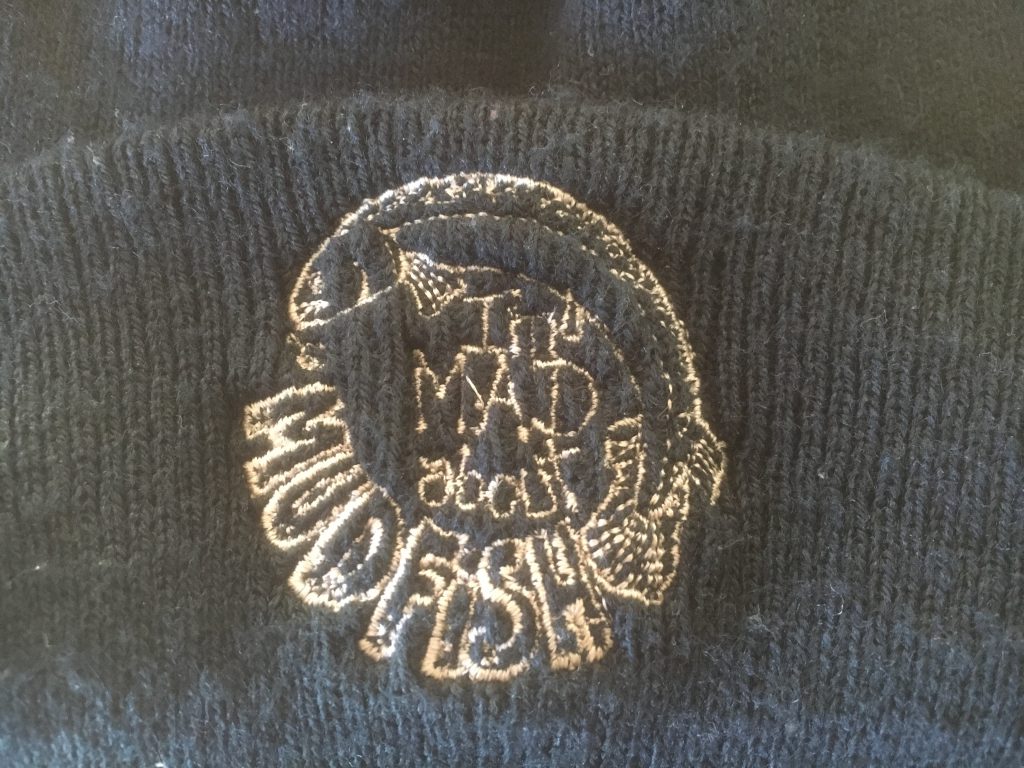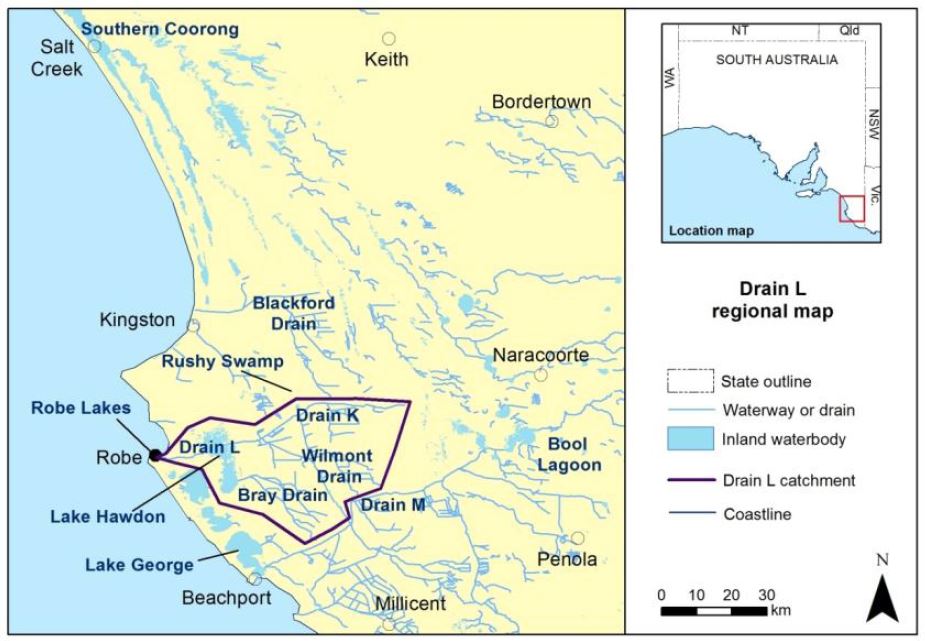Wetland restoration and an elusive little fish
Aquasave-Nature Glenelg Trust ecologists Lauren Brown and Nick Whiterod (with help from Ruan Gannon and Dan Macleod) have successfully completed the first survey of Australian Mudfish in the South East since 2010-11 (Mudfish monitoring – 2019 report). But first, some background to the story of the elusive Australian Mudfish (Neochanna cleaveri).
Back in 1974 someone caught a fish from Bool Lagoon and popped it in a jar, mistakenly identified as a Mountain Galaxias (Galaxias olidus). Decades later Michael Hammer (native fish expert and current Aquasave-NGT Committee member), found the old specimen jar while reviewing all native fish records in the South Australian Museum.
That fish was the first South Australian record of the native Australian Mudfish previously known only from Tasmania and coastal Victoria. Thus began the quest to rediscover the South East population of Australian Mudfish. But despite targeted surveys, not a single Mudfish was found. The South East Fish Inventory in 2002, surveyed 182 sites across the region and found none. Australian Mudfish aren’t big, rarely longer than 8 cm. Maybe the 1974 specimen was a member of a local population that was now extinct?
Then in 2008, at the height of the Millennium Drought, Michael was dip-netting the Sutherland Drain looking for another threatened fish species, Little Galaxias (Galaxiella toourtkoourt), when he found a single live whitebait (juvenile) Australian Mudfish. Perhaps in the drought conditions fish had concentrated in the small amount of remaining habitat? This exciting rediscovery led to funding for a targeted Mudfish survey of the Sutherland Drain area. A commemorative (now coveted), “I’m Mad About Mudfish” beanie was worn by the Mudfish survey team and volunteers.
Meanwhile, in November 2009, future NGT Ecologists Ben Taylor and Greg Kerr were wading through a fairly full Lake Hawdon South, when Greg spotted a dead fish floating on the surface. At that time the fish community of Lake Hawdon South, one the South East’s largest and most intact wetlands, was virtually unknown. Ben emailed a photo of the fish to Michael Hammer, who immediately identified it as an Australian Mudfish. Lake Hawdon South and surrounding areas were added to the hit list for the targeted Mudfish survey.
By September 2010 when Michael Hammer, Mel Tucker and Ben Taylor arrived at Lake Hawdon South it was very full; around 3,200 hectares under water. Far from the concentrated pools of the drought, these conditions were hardly ideal for catching rare fish. With low expectations, the fyke nets were set on a cold grey afternoon.
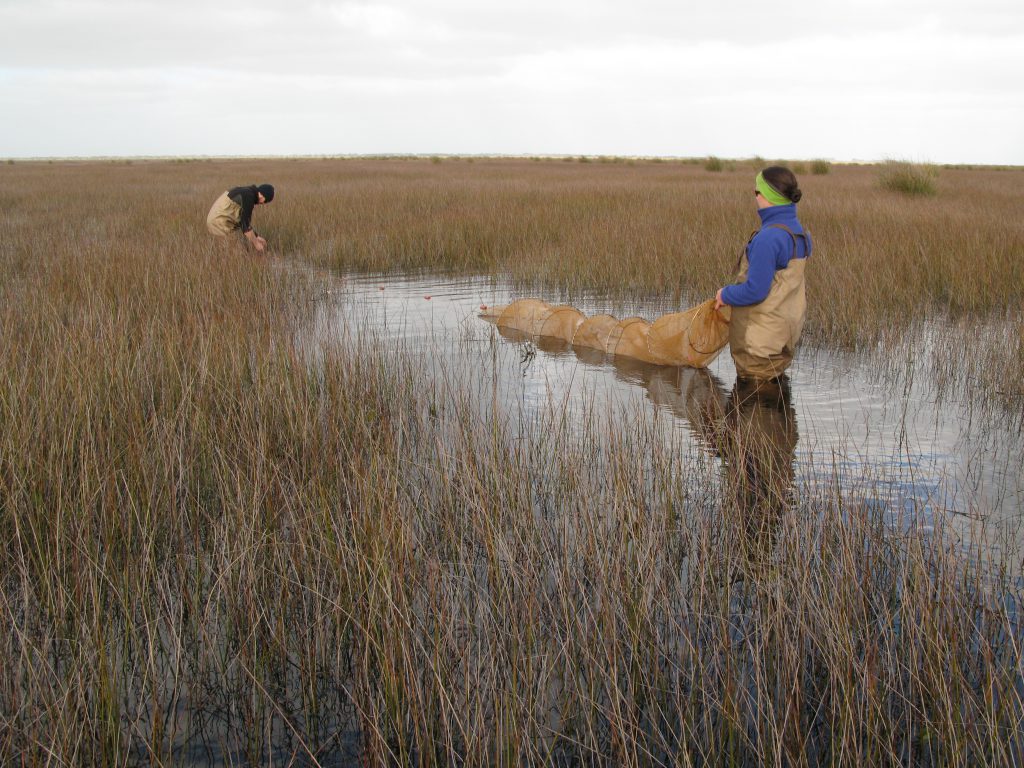
Michael Hammer and Mel Tucker set a fyke net in the extensive sedgelands of Lake Hawdon South, 17th September 2010 (Photo: Ben Taylor)
The next morning it was a Mudfish bonanza! Across five sites in and around Lake Hawdon South, 265 individual Australian Mudfish, from juveniles to adults, were captured. Mudfish were also present in good numbers across five sites within the Sutherland and lower Drain M area.
The rediscovered South East population represents a significant extension to the known range of the species, with the nearest population located 350 km away near Cape Otway in Victoria. Clearly Lake Hawdon South, with its previously unknown fish community, is the major stronghold for Australian Mudfish in the South East. It also has a large population of the nationally Vulnerable Little Galaxias. The 2010 survey also confirmed that the Drain L catchment, in which Lake Hawdon is located, was free of all introduced pest fish species, an important factor for threatened native fish. In 2011, further sampling occurred across the Drain L catchment and targeted studies (movement and otolith microchemistry) investigated movement between the ocean and freshwater habitats (diadromous movement), which is typically a feature of the species.
The Drain L catchment including Lake Hawdon.
Fast forward to late winter 2018, and the current status of Australian Mudfish in the South East was assessed by revisiting 16 of the previously sampled sites. After a few very wet months, there was no shortage of water across the Drain L and Drain M catchments. Overall, a total of 140 Mudfish were recorded, at six of the sampling sites. When differences in sampling effort were accounted for, the data showed no marked changes in abundance of Mudfish between 2010-11 and 2018.
However, Mudfish were only detected at one of the four previously recorded sites in in Sutherland Drain. On-ground wetland restoration works at “Illuka” in 2016, overseen by the late, and sadly missed, Steve Clarke, probably contributed to the Mudfish persisting at the most upstream site because the recently restored wetland holds water more deeply, and for longer, and provides ideal habitat and refuge for Mudfish, and also the threatened Little Galaxias recorded at the site. “Illuka” landholder, Steve Harris, was involved in monitoring and shared our excitement when we recorded our first Mudfish for the sampling trip.
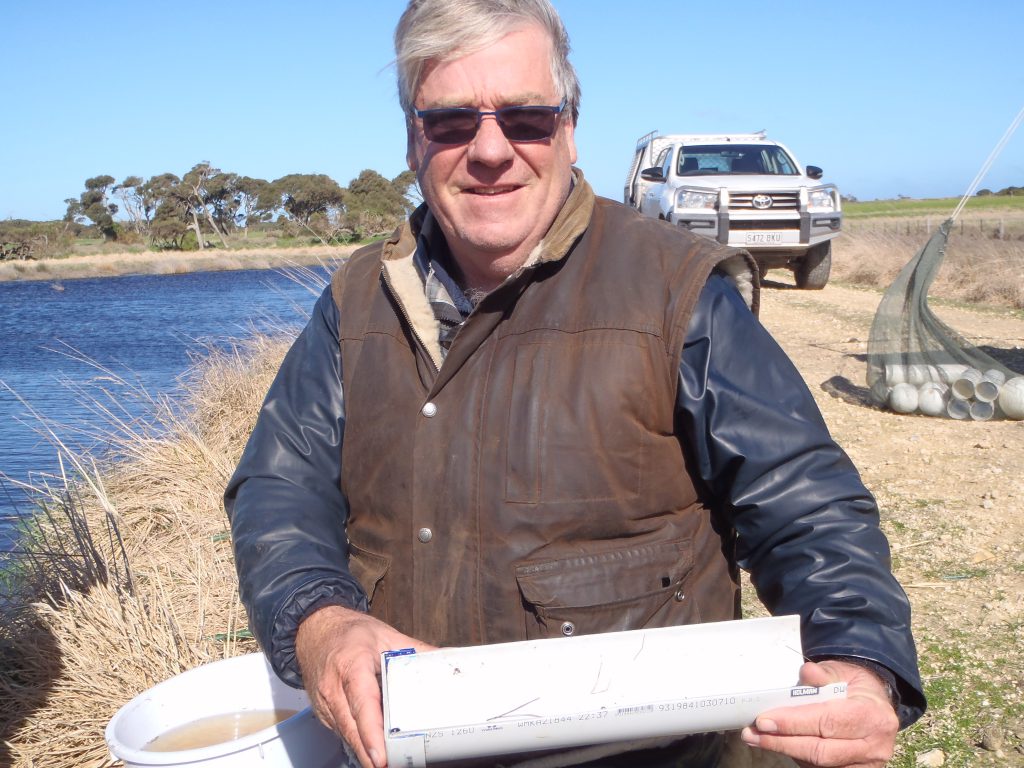
“Illuka” landholder, Steve Harris assisting with the surveys on his recently restored wetland property
In the Drain L Catchment, Lake Hawdon South remains the stronghold for the South East population. Almost 94% of the total Mudfish caught in 2018 were found across the three monitoring sites in Lake Hawdon South.
The high abundance of Mudfish in Lake Hawdon South, and persistence in restored aquatic habitat at “Illuka”, highlights the species’ preference for open, seasonally inundated wetland habitat. At Lake Hawdon South we sampled at “Almanda”, where Patrick Matthews (the landholders’ son) eagerly took part in the fish sampling, just as he had done eight years prior. It was great to see Patrick’s passion for freshwater native fish hasn’t wavered.
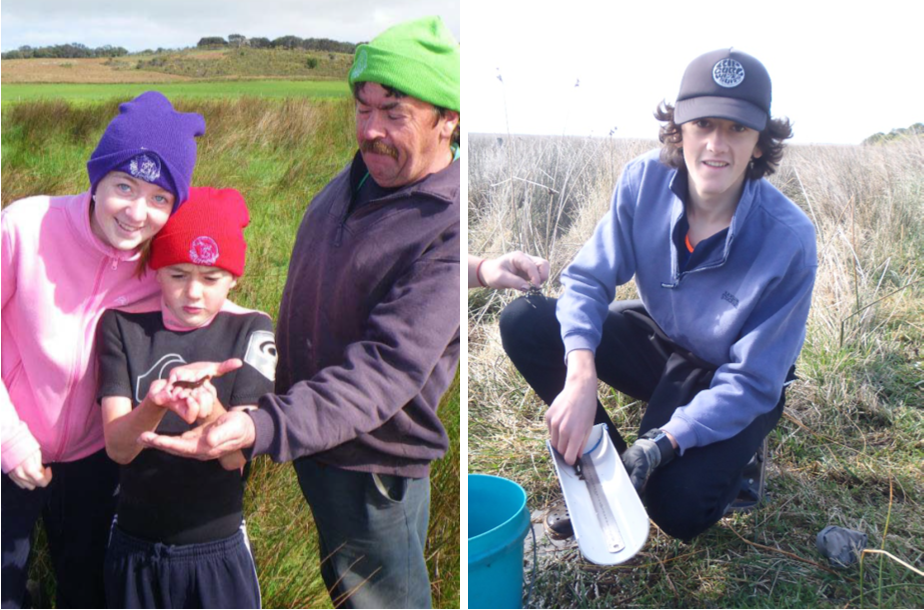
Patrick Matthews (and family) in 2010 (left, note beanies) and 2018 (right) assisting with fish sampling at their “Almanda” property on Lake Hawdon South
As well as Mudfish, the surveys found high numbers (217 fish) of Little Galaxias and a single record for Yarra Pygmy Perch (Nannoperca obscura). Southern Pygmy Perch (N. australis) were abundant across the catchment (336 fish), along with Common Galaxias (Galaxias maculatus) (285 fish). The huge numbers of diadromous Congolli (Pseudaphritis urvillii) (1736 fish) across the lower end of Sutherland Drain and Drain M were a sight to behold! Most individuals were in breeding condition, so we think they were migrating downstream to spawn in the estuarine reaches of the catchment.
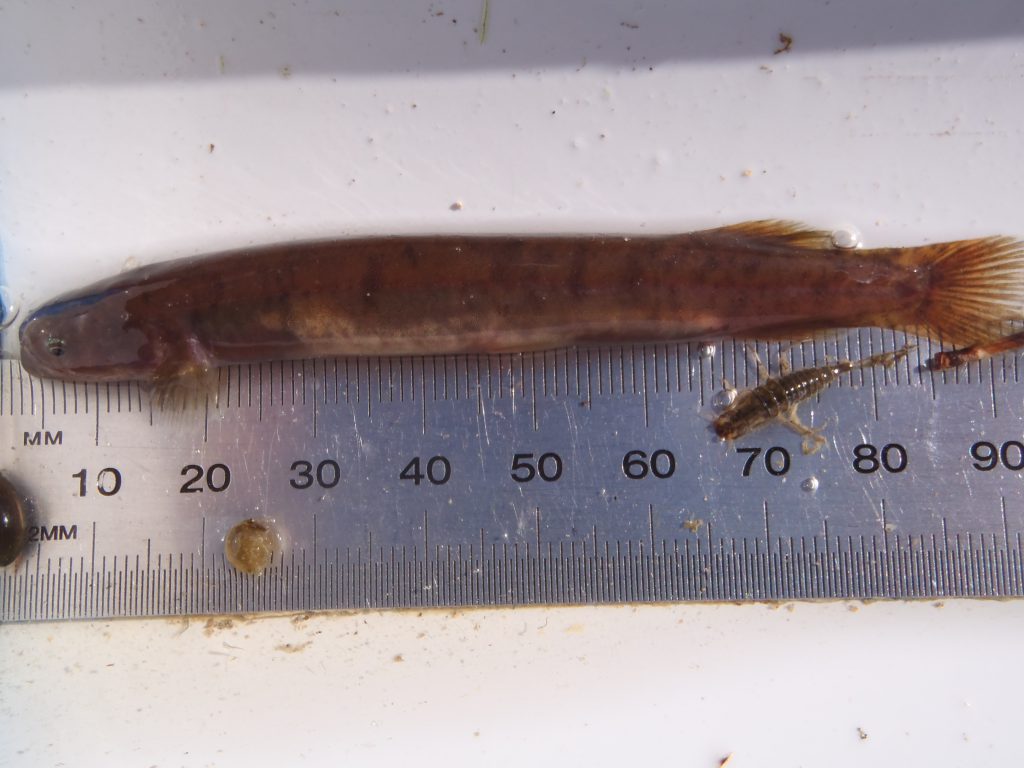
Australian Mudfish: Note there are no scales, and the dorsal (top) fin is well back towards the tail, and above the anal (bottom) fin. The species can also be distinguished from Galaxias species by their small pelvic fins, very small eyes and large tubular nostrils
A special thanks to the local landholders Steve Harris, the Matthews family, and the McGrath family for their assistance and involvement in the sampling. It was a fantastic result to confirm the continued presence of the Australian Mudfish in the South East, the value of wetland restoration, and the continued pest-fish free status of the Drain L catchment.
A scientific paper describing the recent history of the species in the South East is in preparation. This will help raise the profile of this enigmatic species.
It can be surprising what you find when you take the time to look!


